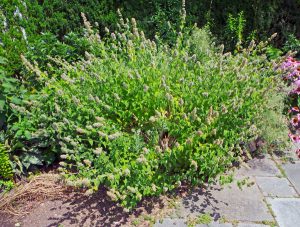
Catnip is a vigorous and weedy herbaceous perennial native to Eurasia in the mint family (Lamiaceae) that is hardy in zones 3-9. Widely naturalized throughout temperate regions of the world, Nepeta cataria is one of several species that are referred to collectively as catmints. Typically found in disturbed areas, such as roadsides or field edges, along streams or on waste ground, this plant has aromatic leaves that most cats are attracted to, although many people are not enamored of their pungent odor, variously described as a combination of thyme and oregano to “mildly skunky”.
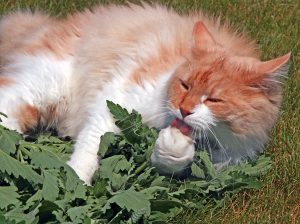
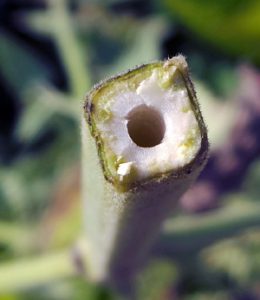
Catnip has green to gray-green foliage on erect, branched stems and a rangy habit. Like other members of the mint family, it has the characteristic square stems of mint plants and opposite leaves with 1 inch petioles. The light green stems and petioles are covered with fine hairs. The triangular to ovate leaves are up to 3 inches long with coarse teeth along the edges (crenate margins) and are cordate at the base. Both upper and lower surfaces are covered with fine hairs, and a reticulated network of veins is clearly visible on the upper side. Plants die back to the ground in the winter, and fresh stems emerge in early spring. Plants can grow up to 3 feet tall and wide under ideal conditions, and may form colonies from the short rhizomes.
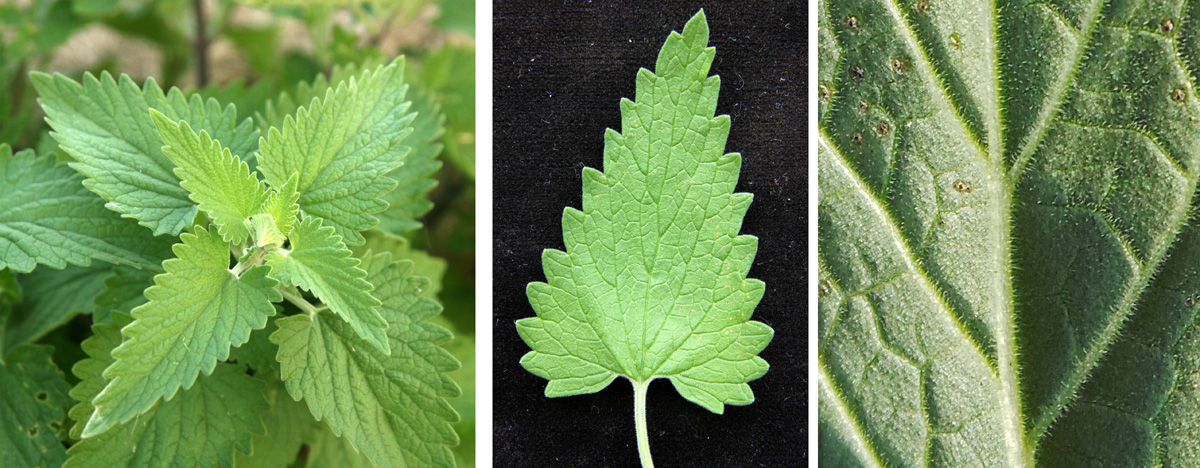
Plants flower anytime from late spring through fall, blooming for one to two months. The small flowers (about 1/3 inch long) are borne in densely crowded whorls on spike-like terminal racemes. The individual bilabiate (two-lipped) flowers, typical of the mint family, are white with pale purple or pink spotting on the lower lip. The small upper lip has two lobes, while the lower lip has three lobes, with a larger middle lobe with a frilly outer edge. Bees of all types, wasps and flies, as well as many different types of butterflies, visit the nectar-laden flowers. Shearing after initial flowering promotes repeated blooming.


Flowers are replaced by seed capsules, each containing four smooth, ovoid nutlets. Seed-eating birds, such as goldfinches, may visit the plants if not deadheaded. This plant reseeds readily, and may become a nuisance in some areas but is not generally considered an invasive plant in Wisconsin. To reduce reseeding, cut the plants all the way to the ground after flowering.
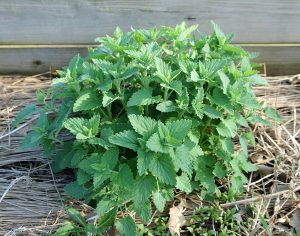
Catnip is not particularly noted for its ornamental qualities, so it is rarely cultivated exclusively as an ornamental, or to attract butterflies, but it is generally grown for house cats. Other catmints with showier flowers and better-behaved habits (but less enticing leaves for cats), such as Nepeta x faassenii or N. racemosa, make much better ornamentals, but N. cateria could be combined with other perennials in the border as for the other catmints as part of a “cat-friendly yard,” or included in an herb garden. It can also be grown in containers. Pinching back regularly will result in a more compact and less weedy looking plant.

Catnip grows best in full sun and average, well-drained soil, but survives in partial shade and thrives in poor soils. Soil moisture and fertility levels greatly influence plant size. Once established, this plant is fairly drought tolerant. Pinching as the plants are growing up in the spring will help develop a more dense, well-shaped plant if grown as an ornamental. It is not favored by deer but could be damaged by roaming cats (mainly breaking the stems when rolling on the plant). Someone suggested putting an ornamental bird cage over the plant to protect it from marauding cats and others recommend growing it in a hanging basket to keep it out of reach. It is readily propagated by seed (sown seed indoors a few weeks before the last frost) or by division of established plants.
– Susan Mahr, University of Wisconsin – Madison
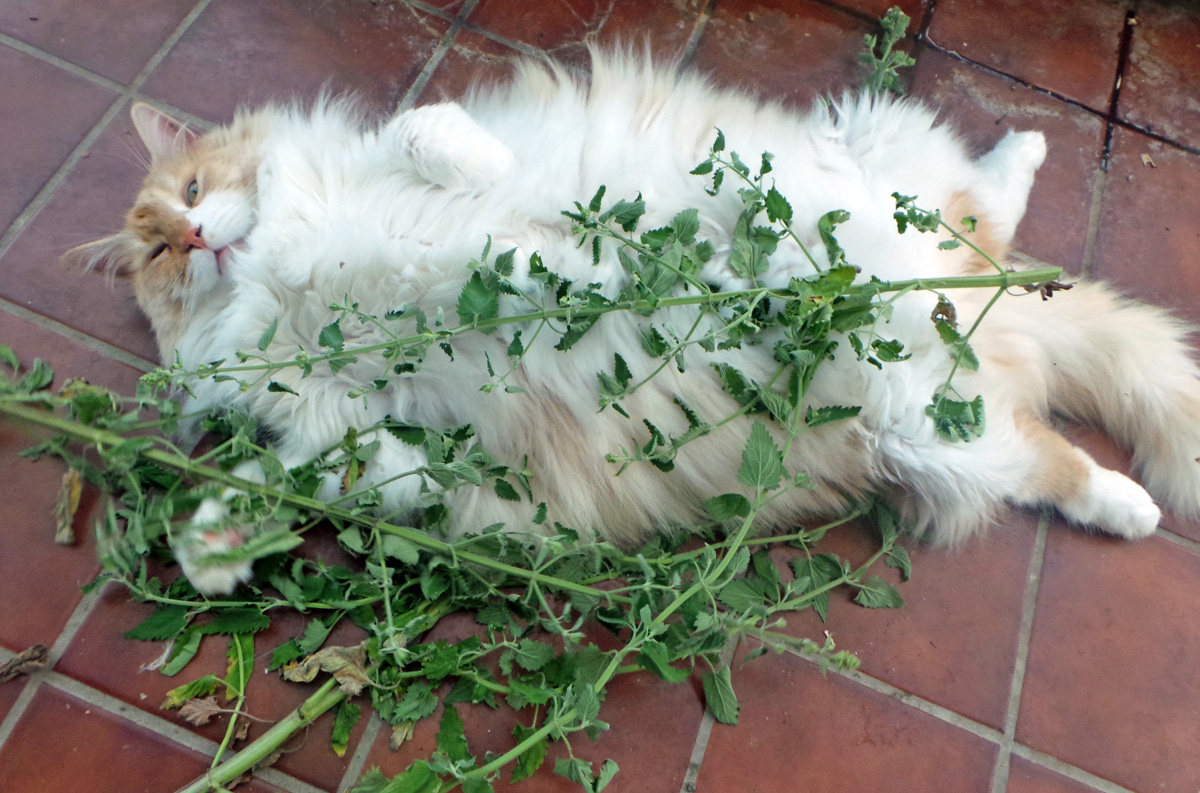
Ask Your Gardening Question
If you’re unable to find the information you need, please submit your gardening question here:





 Aster, Symphyotrichum spp.
Aster, Symphyotrichum spp. Fascinating Fasciation
Fascinating Fasciation Alternatives to Lawn: Groundcovers
Alternatives to Lawn: Groundcovers Marigolds
Marigolds


